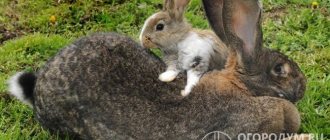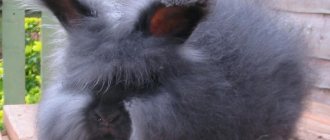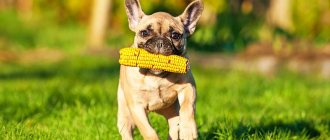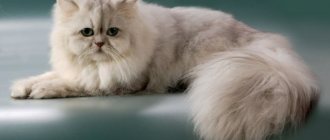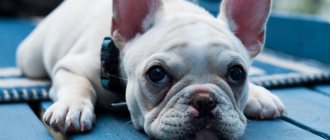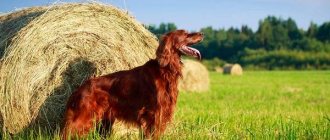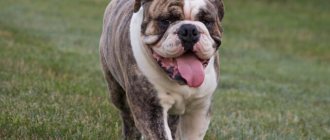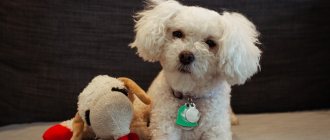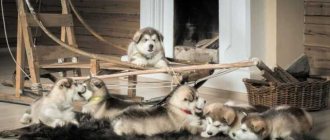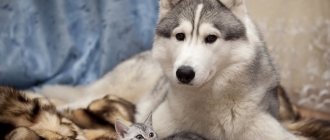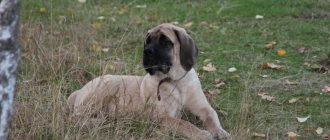In Soviet times, rabbit breeding in our country was quite well developed; the USSR was even one of the largest producers of rabbit meat and rabbit skins. However, the economic collapse of the 1990s hit this livestock sector perhaps harder than any other. The vast majority of large farms were destroyed, and the gene pool was preserved only through the efforts of enthusiasts in small and medium-sized farms. In the 21st century, there was a turning point and the industry began to revive again. Many novice rabbit breeders are interested in the Flanders giant rabbit breed. But are they really that good?
History of the breed
The Belgian giant comes from Flanders, the northern region of Belgium, otherwise called Flemish. It can be considered one of the oldest species, since it is known that the first rabbits of outstanding size were bred in the 16th century near the city of Ghent.
It is believed that the Flanders descended from the largest individuals of Old Flemish blood, which were bred in ancient times and have not survived at the moment. Perhaps the blood of Patagonian rabbits brought from Argentina was added to their pedigree.
There is an even more amazing version that these are the descendants of ancient stone hares, which were large in size and lived in caves. Although now it is difficult to understand how they crossed with domesticated animals. Be that as it may, breeding work was carried out for three whole centuries, and in the 19th century rumors leaked from Belgium about this robust one.
It is known for certain that the first record of a Flemish-type rabbit was recorded only in 1860. The owner of such outstanding external data, beautiful fur and a large amount of meat could not go unnoticed. However, little attention was paid to him at first.
The first standards for the breed were written in 1893, after the Flemish Giant was exported to England and then to America. It was crossed with other breeds and new species were obtained; branches from the Flanders began. He began appearing at exhibitions in 1910.
Flanders rabbit
In 1915, the National Federation of Flemish Rabbit Breeders was organized, which continues to promote the breed to this day. It was also brought to the territory of the former Soviet Union, but it did not take root due to the harsh climate, but it served to develop the domestic gray giant breed.
Disease resistance
Thanks to their strong immunity, Flanders are resistant to respiratory and viral diseases. To prevent the development of pathologies, preventive immunization is recommended.
It is mandatory to vaccinate pets against diseases such as pasteurellosis, myxomatosis, and viral hemorrhagic disease. Primary vaccination is carried out on rabbits at 1.5 months of age (in the spring) against myxomatosis. After 14 days, you should get a preventive vaccination against a viral hemorrhagic disease.
Vaccinations require a visit to a veterinary clinic. Before vaccinating, the doctor examines the animal to rule out primary signs of respiratory diseases. Sick pets are immunized after they have fully recovered.
Description and characteristics of the breed
The Flanders rabbit is a powerful representative of his world, perhaps he can be called the largest of all domestic rabbits. Flemish giants are known for their obedience and patience, so they are happily bred as pets.
It’s not for nothing that they are also called “gentle giants” and “versatile bunnies.” They can be used for a wide variety of purposes - as a pet, for participation in various shows, for breeding, and as a fur and meat animal.
These heroes are distinguished by their large mass and some “awkwardness” in their figure. The “baby” weighs from 6 to 10 kg, some specimens grow up to 12 kg. In Britain, a record weight of 25 kg was recorded. The body is elongated. The back is straight, but sometimes arched. The neck is short and looks “recessed” into the body.
Large ears look like burdock leaves. The head is large, with fairly plump cheeks and a wide nose. The mustache is small and not very noticeable. The eyes are dark in color, slightly recessed. The animal's chest measures from 35 to 45 cm in girth, which is a large indicator.
The paws are thick and strong, the front ones are short, the hind legs are of medium length. The tail is long and curled. An important condition for the breed is the color of the claws. They should be the same shade as the fur. The standard fur color is white, sand, sandy brown, dark gray and black.
The size of the Flanders breed is impressive
Recently, silver, ash, red-sand, blue and even orange specimens have appeared. The fur is dense, soft and thick to the touch. The length of the hairs is up to 3.5 cm. Flandre in the photo looks as prescribed by the standard - good-natured and flexible. Its “fluffiness” adds a pleasant “homeliness” to the appearance.
Because of its sociability, affection and friendliness, rabbits are often purchased as a pet, instead of a dog or cat. He is trusting of his owner, smart, obedient, and loves to play with children. In addition, it is not dangerous for a giant to be in a house with other animals. He inspires respect with his size.
Behavior
As a rule, representatives of meat breeds have a bad temper. However, Flanders rabbits are not like that at all. According to reviews from experienced breeders, the white Flanders rabbit is distinguished by intelligence and intelligence. Adults are calm and non-aggressive, get along well with other pets, quickly get used to home conditions, this is why they are loved and are often kept as pets.
It is noteworthy that these rabbits are completely non-aggressive towards people, and show exceptional friendliness towards children.
Signs of breed quality
Purebred Flanders must meet the following requirements:
- The ears are wide, erect, pubescent, with a black border along the upper edge, size from 17 to 25 cm;
- The cheeks are large and thick;
- The chest is voluminous and wide in width;
- The body reaches 90 cm in length;
- The weight of an eight-month-old rabbit is from 6 to 7 kg;
There is no rejection based on color; any color accepted by the standard is welcome.
The following are considered inferiority:
- Small body weight of rabbits, small individuals are discarded;
- Insufficient weight gain as you get older;
- Non-standard head size and non-compliance with proportions are considered defective;
- Ear length less than 17 cm;
- Tendency to aggression, inflexibility of the animal.
Flanders at the exhibition. Expert assessment.
Rabbit weight:
The catalog does not show the dynamics of weight gain, but only the final figure by 8 months: 7.0 kg or more. She completely refutes the tales that Flanders existed only in the old days, they were babies and only the Germans “made” them into giants. We will use averaged data for different farms, taking into account that they can differ significantly even within the same farm. For average rabbits, such as Californians and New Zealanders, the spread is not as large as it may be in this case. After all, some individuals easily overcome the 10-kilogram mark.
Growth dynamics curve up to 8 months.
Rabbits grow especially quickly at first. In the first months you gain a kilogram. Then the pace slows down, and the amount of food eaten, on the contrary, increases. Thus, the growth curve ends up bending upward after 4 months, smoothly transitions to a horizontal straight line after 8-9 months.
Permissible deviations:
A slight deviation from the giant type. Weak ears (texture). Dull color, admixture of individual white hairs with the hair of the main color, white inclusions in the edges of the ears, colorless upper ends of the hair, areas with insufficient brightness of the coat. Deviation in subcolors.
Inadmissible deviations:
A complete departure from the giant type. Massive isolated white hairs or white spots. Black head, intermediate brown, whitish belly or dewlap with predominant iron grey. Lack of reddish-brown intermediate color in gray tones. Colorless claw.
Kinds
As already mentioned, the Flemish breed gave impetus to the creation of many large breeds of rabbits. They have the common collective name "giants", but the place of birth varies. In addition to the Belgian giant, the following breeds are known:
- White giant. Typical albino with red eyes. Also developed in Belgium at the beginning of the 20th century. The breeders selected among the Flanders only animals with white skins and recorded the result. Similar work was carried out in Germany. They are distinguished by thin, strong bones, elegant constitution and tender, tasty meat.
- Vienna Blue Giant. Also a descendant of the Belgian giant, it has a different intensity of bluish-blue coat color. He has a strong physique, is fertile and in good health. Resistant to low temperatures. Selected at the end of the 19th century in Austria.
- German giant (Riesen breed). Obtained in Germany at the end of the 19th - beginning of the 20th century. It has several types of color - gray, blue, black, yellow, gold. It differs from the Belgian in faster weight gain, but late puberty. In addition, they are more likely to have health problems.
- Gray giant or Poltava giant. Bred in the mid-20th century by Ukrainian livestock specialist A.I. Kaplevsky. He has large dimensions, long ears and a good-natured disposition, inherited from the Belgian. It differs from its ancestor in having a lighter blue-gray coat, only a straight back (remember, in a Flandrean it can be “arched”), a lower quality skin, the “Poltava” gains weight faster and has shorter legs.
- Silver giant. The body is large but compact. Brought out in the former USSR near Tula and in the Poltava region. Now it is being reproduced in Tatarstan. The quality of the cover is second only to the famous chinchilla and the black-brown breed.
In addition, there is a variety of “rabbit-ram”, named after the shape of the skull. It includes many subspecies - French, German, English, Meissen. These pets weigh 5-8 kg, have the same docile nature, long ears and thick fur. The non-standard structure of the ears has led to the fact that they hear worse and are therefore less fearful.
Pros and cons of the breed
The positive properties of the breed include:
- Unpretentiousness in food.
- Good fertility.
- Abundant feeding of newborn rabbits - females have a lot of milk, which is considered to be of excellent quality.
- Good survival rate of rabbits.
- Rapid growth of babies.
- Flexible character.
- Resistance to diseases and climate changes.
The weight of the Flanders breed reaches 10 kg
Negative qualities:
- Quite late puberty.
- The meat yield is 55-60%. Although, given the size of the Flanders rabbit , the amount is quite large. A medium-sized individual has about 4 kg of pure meat. The larger the rabbit, the more useful product.
- Congenital curvature of the limbs. It happens that a rabbit gives birth to babies with underdeveloped and crooked legs.
- Average quality of skins. A lot of fluff with a high concentration of guard hairs. In addition, the cover may be uneven.
- Gluttony and constant feeling of hunger.
- High price of “purebreds”.
Care and maintenance
First you need to decide on the habitat of the rabbits. To locate the cage, choose a warm and dry place, without drafts. The cage should be large, to match the pets. Dimensions are at least 170x80x60 cm. If there is a rabbit with children in the cage, then even larger - 170x110x60 cm.
An increased cage size is necessary to protect the offspring from heavy trampling by the mother. It is necessary to provide the cages with drinking bowls and feeders. The drinking bowl should always be filled, especially for a nursing rabbit. There have been cases where, due to lack of water, the female ate the babies.
It is necessary to clean the premises regularly; rabbits are very clean animals. Adult rabbits are fed two to three times a day in an enclosure protected from wind and direct sunlight. Natural materials are used as flooring - wood, dry bedding made of hay. No artificial materials or meshes. This can lead to illness and injury to the animal.
The breed is unpretentious in keeping and tolerates almost all weather conditions, except severe frosts. A little advice - provide lighting and heating to the cages; on short winter days they lack light and warmth.
At approximately 45 days of age, rabbits are vaccinated against myxomatosis (an infectious disease with high fever, the formation of tumor lumps, swelling on the head and complex inflammation of the eyes). At the same time, a vaccine against hemorrhagic disease is given.
Sometimes a complex vaccination is given - 2 injections every 15 days. But all procedures are prescribed and under the guidance of a veterinarian. If you notice lethargy, apathy, any growths, itching or unexpected bald spots on the animal’s body, go to the clinic immediately.
Breeding
Look like piglets
This type of rabbit is considered one of the most popular among breeders of these animals. The most tender meat of the handsome white sheep has captivated gourmets from all over the world, and its elegant snow-white fur is in demand among fur manufacturers. The large size of the skin is suitable for sewing fur coats.
Skins are used both in natural color and in dyed form. Among the rabbits, a distinct fluffy coat has appeared, whose fur has more fluff than prescribed by the standards - change it. Do not allow such a rabbit to further produce offspring, this is a defect in the breed.
They are distinguished by their endurance, produce large offspring, and are early in maturity. With positive qualities, they have a feature that sharply makes white giants favorites: their females do not eat their newborn rabbits.
The excellent appetite and unpretentiousness of these animals in food will not create problems in raising them at home. It is not afraid of Russian frosts, which makes its conditions easier. They are in demand among breeders. They are used to breed new breeds.
Pregnancy and childbirth in females take place in a standard manner, like others. Monitor your health, avoid stress and fear, protect from diseases, feed and water. It is necessary to prepare the cell and queen cell for childbirth. Don't neglect disinfection and cleaning.
Focus on the threat of diseases such as mastitis and fetal dermatitis. The giant is susceptible to these diseases.
Maintenance and care.
Cells.
Kids in cages
To take care of animals, create all the necessary conditions for them. Start with the living space. The cages for white giants must be larger than for others. They need space. Do not place the cage in the sun, place the rabbit in the shade. Protect from drafts and frost during the cold season.
When setting up a cage for a female, do not forget about the queen cell. It should be located to the side across the entire width of the room. In the queen cell, the roof must be removed. This is necessary for examining newborns and monitoring the preparation of the female for childbirth.
Adviсe
If you have encountered rodent problems that cannot be avoided, focus on protecting your rabbits from rats. Set traps and mousetraps. Cover the cages from below with tin, leaving space for pallets. Fence off the side walls from below with tin to avoid troubles.
The doors of the cages are made of mesh material. The clearance of the cells is less than 2 by 2 cm. In the winter, they can be covered with burlap for warmth and protection from the wind.
Don't forget about your inventory. Take care of feeders and drinkers. To do this, use metal cans or bowls.
The main thing in content: cleanliness. Animals take this criterion very seriously and will not tolerate violations.
Nutrition.
Eating grapes
Constantly monitor the presence of water in the sippy cups. Especially if a new litter is on the way or the female has already given birth.
In summer, feeding is much easier. Rabbits eat grass and various vegetables. Grain and young shoots of trees are used. In winter, hay and grain crops are provided for feeding. In order not to spend extra money on feeding your charges, prepare food for the animals yourself.
It’s much easier for those who have a garden. Use tops, pumpkin, sunflowers, salads, bean strips, tree leaves, cucumbers, carrots and other vegetables and herbs for this. Make your own hay. Just don’t forget to dry it thoroughly so that it doesn’t “ripen.”
Many breeders prepare a dish for their rabbits called “Vinaigrette”, although it would be more logical to call it “Ostankino”; it is prepared from leftover food. Waste fruit and vegetable origin, you can add cereals, boil, then drain off the excess liquid, cool and serve the rabbits for breakfast. Pamper your rabbits - give them bread that is washed with milk.
Nutrition
The main feeding feature of Flanders is their insatiability. They are not picky eaters, but they will need a lot of food. In the morning they are given succulent feed and some concentrates (50-60 g), at lunch - fresh grass or dry hay, in the evening they can be given silage and again 50-60 g of concentrates. They need to be fed at the same time.
Fresh herbs are first slightly dried in the sun. New foods are introduced into the diet gradually. It is not allowed to give dirty root vegetables to an ornamental animal. First you need to thoroughly wash the product and grind it. Barley and cake are also crushed, and legumes are soaked for 3-4 hours.
Check feed for freshness, never use moldy or rotting food. And do not feed tops of nightshades (tomatoes, eggplants, potatoes), as well as branches with foliage from stone fruit trees, elderberries and poisonous herbs. Do not use frozen foods. Here is one recipe for vegetable mash for flanders:
— Pumpkin or zucchini – 1 share;
— Boiled potatoes – 1 share;
— Fodder beet – 5 shares;
— Carrots – 1 share.
You can also add feed there. The grain mash is prepared from barley or wheat, oats - 2 parts each, and corn and cake - 1 part each. And again we remind you about water. For a large animal it is vital.
Rabbit diet
Flemish giants are unpretentious to food and have an excessive appetite. If you follow the rules regarding feeding, pets can quickly gain weight and grow.
Experienced rabbit breeders advise:
- Feed pets according to schedule.
- Do not feed the rabbits fresh grass, but first dry it for 1-3 days.
- Do not give frozen, spoiled food, as this can impair digestive function.
- Vegetables must be washed and chopped before serving.
- New food should be introduced little by little, at least 5 days in advance, so as not to overload the digestive system.
- Do not feed Flanders with whole barley; it should be ground initially.
- Before giving to rabbits, beanstalks should be soaked, and chopped cabbage leaves should be mixed with dry hay in a small volume.
- In order for rabbits to grind down their incisors, they must be fed daily with branches, straw, and other roughage.
- It is necessary to ensure that the diet of Belgian giants is rich in vitamins - this helps to maintain their fur, claws and teeth in proper condition.
- Bone meal or crushed chalk (1-2 grams) should be added to food or water.
- To feed rabbits, you can use feed containing vitamins and minerals. The finished products include: corn, wheat grain, sunflower cake.
Drinking regime is also required. You need to make sure that the water is clean, change and top up regularly. The drinking container must be firmly secured in the cage. Ideally, a flander needs 1.5-2 liters of water per day.
To avoid digestive problems, it is recommended to add biomycin to the water. The dose of the substance is discussed with a veterinarian on an individual basis.
Belgian giants should be fed three times a day. For better absorption and prevention of possible digestive disorders, it is necessary to feed Flanders according to this principle:
- 1st feeding: 1/2 part of the norm of concentrated feed;
- 2-feeding: in the summer months - fresh vegetation, in winter - dried grass;
- 3rd feeding: silage with the remainder of the daily norm of concentrated feed.
In addition, it should be taken into account that some products will have to be abandoned when feeding Flemish giants:
- broom;
- potato tops;
- poisonous vegetation (belladonna, St. John's wort, nightshade, lily of the valley, celandine, aronica, cornflowers);
- branches of stone fruit woody vegetation.
Reproduction and lifespan
To start breeding Flanders rabbits , you need to know an important nuance. Compared to other breeds, Belgian giantesses mature late, no earlier than 8 months of age. But this is an additional factor for the birth and bearing of healthy offspring. Pregnancy lasts 25-28 days and is not difficult.
The birth is also easy, with a litter of at least 8 rabbits. Each weighs about 80-100 g. During the first weeks, the mother takes full charge of caring for the babies. She feeds them nutritious milk. Change the water more often, at least 3 times a day. After 3 weeks, the babies crawl out of the nest and try to taste food for adult rabbits.
The owner needs to remove the queen cell and disinfect the entire room. Growing cubs need to be examined every day. If you notice any complications, consult a doctor immediately. On average, rabbits live 5-6 years, but with good care the period can be increased to 8 years.
Okrol
In order to get large and healthy offspring, experienced farmers plan the litter in advance. Despite the fact that offspring can appear at any time of the year, it is believed that breeding offspring are best bred in summer, winter or spring. In the autumn season, meat animals are bred.
A few hours before giving birth, the female begins to build a nest from hay and her down. Therefore, until this moment, the owner must clean and disinfect the cage, fill it with dry hay and water.
Most often, the birth of babies begins at night or early in the morning. Lasts from 10 to 30 minutes. After birth, the female eats her afterbirth, licks the newborn rabbits and carries them to the nest. The number of rabbits can vary from 7 to 15.
Price and reviews
The price of a Flanders rabbit is considered rather high. For a three-month-old rabbit you can pay from 800 to 1200 rubles. It is better to purchase animals from reliable breeders on proven rabbit farms. Then you will be confident in both the purity and good health of your pets.
Before purchasing, ask experienced owners about breeding features and look at reviews on the Internet. For example, on the review site you can read the following comments:
- Lipetsk resident Olga: “I started breeding the breed 3 years ago, before that it was unfamiliar to me. I bought rabbits and did not regret it. Unpretentious large breed. Minimum time spent. Females are good mothers. All the rabbits are alive...”
- Rostov-on-Don, Emil: “I became the happy owner of a dark gray Flanders rabbit. I didn’t even expect such a good character from the rabbit. Smart, obedient and big, just a dream..."
- Snezhnoye, Ukraine, Igor: “I’ve been trying to breed Flanders rabbits for about 3 years. There are a lot of rabbits, but they take a long time to mature. Large, repaired the cage more than once. They eat a lot. But otherwise, it’s a good and calm breed...”
